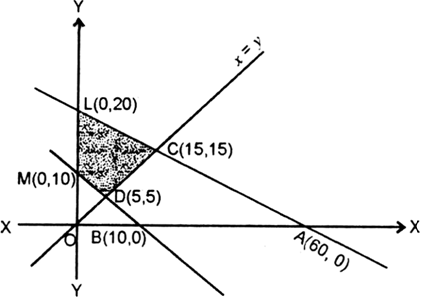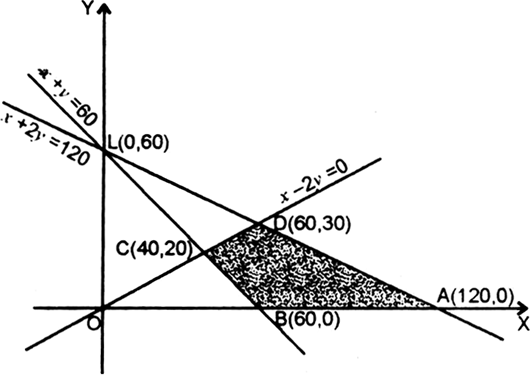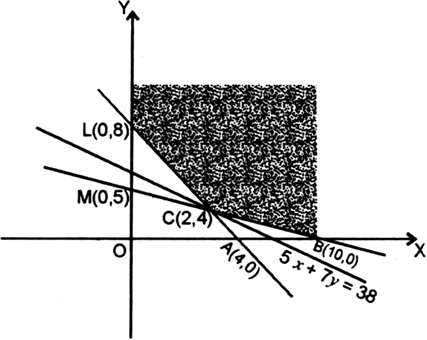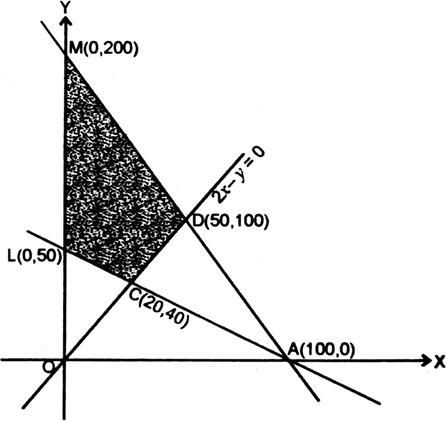Solve the following problem graphically:
Minimise and Maximise Z = 3x + 9y
subject to the constraints:
x + 3y ≤ 60
x + y ≥ 10
x ≤ y
x ≥ 0, y ≥ 0
We are minimise and maximise
Z = 3x + 9 y
subject to constraints
x + 3 y ≤ 60
x + y ≥ 10
x ≤ y
x ≥ 0, y ≥ 0
Consider a set of rectangular cartesian axes OXY in the plane.
It is clear that any point which satisfies x ≥ 0, y ≥ 0 lies in the first quadrant.
Let us draw the graph of the line x + 3y = 60
For x = 0, 3 y = 60 or y = 20
For y = 0, x = 60
∴ line meets OX in A(60, 0) and OY in L(0, 20)
Let us draw the graph of
x + y = 10
For x = 0, y = 10
For y = 0, x = 10
∴ line meets OX in B(10, 0) and OY in M(0, 10).
Again we draw the graph of x = y
This is a straight line passing through O and meeting AL in C(15, 15) and BM in D(5, 5).
Since feasible region is the region which satisfies all the constraints.
∴ DCLM is the feasible region, which is bounded. The corner points are D(5, 5), C(15, 15), L(0, 20), M(0, 10).
At D(5, 5), Z = 15 + 45 = 60
At C(15, 15), Z = 45 + 135 = 180
At L(0, 20), Z = 0 + 180 = 180
At M(0, 10), Z = 0 + 90 = 90
∴ minimum value = 60 at (5, 5)
and maximum value = 180 at (15, 15) or (0, 20).
Tips: -
If C, D are two points having maximum value, then every point on CD gives minimum value.







